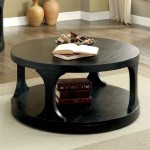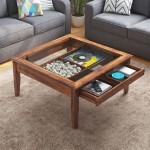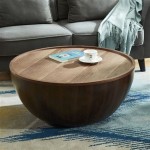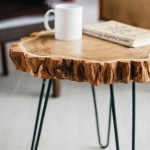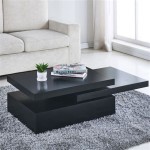Elevating Retail Spaces: Front Table Decor Ideas for Enhanced Customer Engagement
The front table in a retail environment serves as a critical focal point, acting as the first impression a customer receives upon entering a store. Its design and presentation significantly influence a customer's perception of the brand, the quality of the merchandise, and the overall shopping experience. Effective front table decor transcends mere aesthetics; it strategically draws attention, highlights key products, and encourages interaction, ultimately driving sales and reinforcing brand identity.
The development of compelling front table displays requires careful consideration of several factors, including the target audience, the store’s layout, the type of merchandise being featured, and the overarching marketing strategy. A successful front table is not just visually appealing but also functional, contributing to a smooth and engaging customer journey within the retail space. Careful planning and execution are paramount in creating a display that effectively communicates the brand's message and entices customers to explore further.
Key Considerations for Effective Front Table Design
Several fundamental principles underlie the creation of impactful front table displays. These principles encompass elements of visual merchandising, marketing psychology, and practical store management. Adherence to these guidelines significantly increases the likelihood of creating a display that effectively captures attention and drives sales.
Understanding the Target Audience: Before any design elements are considered, it is essential to have a thorough understanding of the target customer. Demographics, lifestyle, purchasing habits, and aesthetic preferences all play a crucial role in shaping the design of the front table. For example, a store catering to young adults might embrace bold colors, trendy designs, and interactive elements, while a store targeting a more mature demographic might opt for a more sophisticated and classic aesthetic. Market research, customer surveys, and sales data analysis can provide valuable insights into the target audience and inform the design process.
Maintaining Brand Consistency: The front table should be a reflection of the brand's identity and values. Consistency in color palettes, typography, and overall design aesthetic is crucial for reinforcing brand recognition and creating a cohesive shopping experience. If the brand is known for its minimalist design, the front table should reflect this aesthetic through clean lines, uncluttered displays, and a focus on high-quality materials. Conversely, a brand known for its vibrant and playful personality might incorporate brighter colors, whimsical props, and more dynamic arrangements. Consistency across all marketing materials, including the front table display, helps to build a strong brand image in the minds of consumers.
Storytelling Through Visual Merchandising: A compelling front table shouldn't just showcase products; it should tell a story. The arrangement of items, the use of props, and the overall theme of the display should work together to create a narrative that engages the customer and encourages them to imagine themselves using the products. For example, a front table featuring outdoor gear could be designed to evoke a sense of adventure, with elements like faux rocks, branches, and landscape photography. A front table displaying kitchenware could be arranged to resemble a kitchen scene, complete with cookbooks, utensils, and fresh produce. By creating a mini-narrative, the front table can connect with customers on an emotional level and make the products more appealing.
Practical Decor Ideas for Diverse Retail Settings
The specific decor ideas implemented on a front table will vary depending on the type of store, the available space, and the desired aesthetic. However, several general principles can be applied across a range of retail settings to create visually appealing and effective displays.
Seasonal Themes and Promotions: Aligning the front table decor with seasonal themes and current promotions is a highly effective way to attract attention and drive sales. During the holiday season, a front table could be adorned with festive decorations, such as ornaments, garlands, and twinkling lights. During the summer months, a front table could feature beach-themed props, bright colors, and displays of swimwear and sun protection products. By tying the display to a specific season or event, retailers can capitalize on current consumer interests and create a sense of urgency. Furthermore, highlighting current promotions, such as discounts or special offers, can further incentivize customers to make a purchase.
Product Grouping and Layering: Effective product grouping and layering are essential for creating a visually dynamic and organized front table display. Grouping similar items together by color, style, or function helps to create a sense of cohesiveness and makes it easier for customers to find what they are looking for. Layering involves arranging items at different heights and depths to create visual interest and prevent the display from appearing flat or monotonous. Using risers, platforms, and mannequins can help to elevate certain products and draw attention to them. Combining different textures and materials, such as wood, metal, and fabric, can also add visual depth and complexity to the display.
Utilizing Lighting and Signage: Lighting and signage are crucial elements in creating an effective front table display. Strategic lighting can highlight key products, create mood, and draw attention to specific areas of the display. Spotlights, track lighting, and LED strips can be used to illuminate products and create a sense of drama. Signage can be used to communicate information about the products, such as their features, benefits, and price. Clear and concise signage is essential for guiding customers and answering their questions. The font, size, and color of the signage should be consistent with the brand's identity and easy to read from a distance. Digital signage, such as LCD screens, can also be used to display dynamic content, such as product videos and promotional messages.
Materials and Props for Enhancing Visual Appeal
The selection of materials and props plays a significant role in the overall impact of a front table display. Choosing materials that are consistent with the brand's aesthetic and using props that complement the products being featured can enhance the visual appeal and create a more engaging experience for customers.
Natural Elements: Incorporating natural elements, such as plants, flowers, wood, and stone, can add a touch of warmth and authenticity to a front table display. Plants and flowers can create a sense of freshness and vitality, while wood and stone can add texture and visual interest. Natural elements are particularly effective for displaying products that are associated with nature, such as outdoor gear, gardening supplies, and organic foods. Using reclaimed wood or recycled materials can also align with a brand's commitment to sustainability. The specific type of natural elements used should be carefully considered to ensure that they complement the products being featured and the overall aesthetic of the store.
Mannequins and Display Forms: Mannequins and display forms are essential for showcasing clothing, accessories, and jewelry on a front table. Mannequins can be used to display entire outfits and demonstrate how different items can be combined. Display forms can be used to showcase individual items, such as hats, scarves, and necklaces. The type of mannequin or display form used should be chosen to complement the style of the products being featured. For example, a high-end clothing store might use sophisticated mannequins with realistic features, while a more casual store might use simplified mannequins or dress forms. The posing of the mannequins should also be carefully considered to create a dynamic and engaging display.
Repurposed and Upcycled Items: Using repurposed and upcycled items as props can add a unique and eco-friendly touch to a front table display. Old crates, vintage suitcases, and antique ladders can all be used to create visually interesting and functional displays. Repurposed items can also help to tell a story and create a sense of history. For example, a front table featuring vintage clothing could be decorated with antique sewing machines and other vintage props. Upcycling involves transforming discarded materials into new and useful items. Using upcycled materials can demonstrate a brand's commitment to sustainability and create a more unique and memorable shopping experience.

Entry Table Decorating Ideas For Spring

67 Best Entry Table Decor Ideas Decorations 2024 Guide

25 Entry Table Decor Ideas To Greet Guests In Style Displate Blog

25 Entry Table Decor Ideas To Greet Guests In Style Displate Blog

Front Entryway Decorating Ideas For Every Season

Entry Table Decor Tips And Ideas For Fall Worthing Court

Entryway Table Decor And Storage Ideas

Entry Table Decor Ideas The House On Silverado

How To Decorate A Console Table 22 Beautiful Decor Ideas

34 Welcoming Entryway Table Décor Ideas For Your Home
Related Posts


